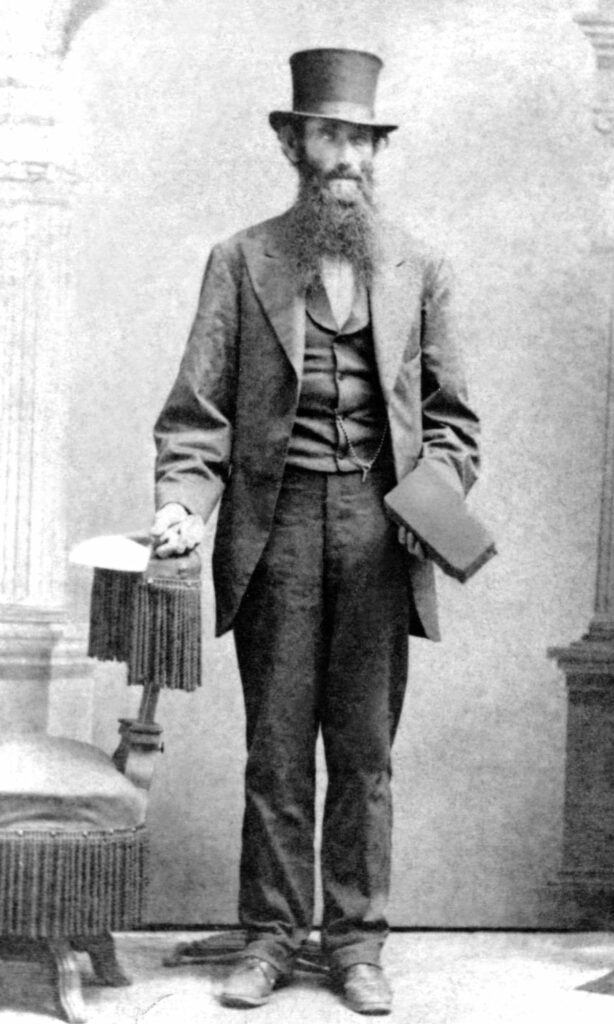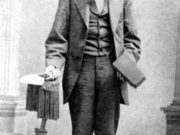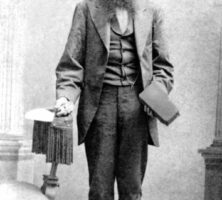Artisans, white and Black, enslaved and free, made significant contributions to the social, political, and economic landscape of antebellum Georgia.
Skilled craftsmen—from shoemakers and coopers to silversmiths and furniture-makers—played a major role in the spread of Georgia’s plantation economy as well as its urban and industrial development. Moreover, many of the objects they produced have provided Georgians with a lasting cultural legacy in the form of decorative arts, buildings, and architecture. The Museum of Early Southern Decorative Arts in Winston-Salem, North Carolina, has done an especially impressive job of collecting information about these early artisans and preserving their crafts for posterity.

Although historians have long acknowledged the importance of artisans in shaping the colonial economy and contributing to the success of the American Revolution and nineteenth-century working-class politics, their efforts have been directed almost exclusively toward New England and the mid-Atlantic. More recently, attention has been paid to artisans in the Chesapeake and Charleston, South Carolina, areas, but very little research has focused on artisans in the rest of the region, especially during the antebellum period.
Race Over Class
Because many scholars have tended to presume that only planters, yeoman farmers, and enslaved people populated the cotton South, skilled craftsmen have been virtually invisible to them. Yet close examination of antebellum Georgia shows that trained craftsmen from Europe and the North were drawn to the state by the economic opportunities they envisioned. Planters migrating to the Piedmont needed skilled craftsmen to erect sawmills and gins. Distribution centers such as Savannah and Augusta needed skilled artisans to provide food (bread, cornmeal), hardware (barrels, nails, shoes, harnesses), buildings (houses, courthouses, jails, shops, warehouses), and with the success of the staple crop economy and the spread of planter and merchant wealth, luxury goods (clothing, silver, carriages). Growing market towns like Macon, Athens, and Columbus emulated the needs of these older, larger cities. While their demands were on a smaller scale, these new Piedmont centers provided opportunities for skilled tradesmen who arrived soon after their establishment.
Artisanry was not limited to whites by any means. Many larger slaveholders encouraged some of their enslaved people to acquire skills that would contribute to the self-sufficiency of the plantation, such as carpentry, shoemaking, coopering, and blacksmithing. They often sent several enslaved people to the city to learn these skills from white master craftsmen. While free African Americas made up a very small percentage of the antebellum Georgia population, they too found artisanal work in cities and towns. Frequently they competed with white journeymen for wage labor.
Thus artisan work consistently blurred the legal and cultural distinctions between white and Black, enslave and free, because these groups frequently worked alongside each other in virtually all crafts. They also spent much of their leisure time together, drinking at grog shops, betting at horse races, and occasionally stealing from employers and selling their loot on the streets. In Augusta and Savannah, enslaved artisans, free Black artisans, and white journeymen lived in the same neighborhoods and sometimes even under the same roof. Master craftsmen commonly made room in their households for their enslaved artisans and also housed the free Black and white journeymen they employed. While such circumstances should have encouraged a class identity among artisans, especially among enslaved, free Black, and white journeyman artisans, this was not the case in antebellum Georgia. Race ultimately proved a stronger card than class. It united white men across their social differences in support of slavery and the racial divide, the experiences of everyday artisans notwithstanding.
Artisan Opportunity
Antebellum Georgia proved to be a good locale for white artisans seeking upward mobility. The recent invention of the cotton gin and the availability and relative cheapness of western lands fueled rapid economic expansion. Artisans, as well as planters, profited from the spread of short-staple cotton. In fact, artisans willing to follow the westward movement of plantation slavery often experienced enough financial gain to become planters and enslavers themselves, although this mobility was harder to achieve after 1830. Such examples of artisan success must have fueled the aspirations of subsequent generations of white artisans, who believed they too could eventually rise up the social ladder. These beliefs encouraged white artisans to embrace a political ideology that relegated free and enslaved African Americas to the lowest rung of that social ladder, and to follow the political principles of the state’s planter elite.
By the late antebellum era, opportunities for artisans in Georgia had grown more restricted, even if white artisans’ dreams had not. The rising cost of land and enslaved people that accompanied the maturation of the cotton economy prevented most artisans from transforming themselves into planters. The availability of ready-made goods from the factories of Europe and the Northeast via the ever-expanding railroad lines reduced local demand for many artisan products and services. The most fortunate and ambitious of Georgia’s artisans worked hard to cater to these new tastes. Some evolved into merchant middlemen who imported finished clothing, ready-made furniture, and countless other items. Others began to invest their profits in local manufactories, with mixed results.
Although the plantation economy continued to need blacksmiths and carpenters, its increasing maturity meant that an increasing number of enslaved people were trained in such requisite tasks, making white artisans in these trades less desirable. For enslaved artisans, this development was an important one. Artisan work allowed them to claim more autonomy and independence from the enslaver than did any other occupation available to the enslaved. Enslaved artisans were often permitted to hire out their time and skills to other whites when the enslaver did not need them on the plantation. And in some cases, enslaved artisans saved money on the side from these endeavors, in addition to paying the enslaver the amount prescribed. Such extra monies supplemented their lives in ways previously denied them and, in some cases, enabled enslavedAntebellum Artisans artisans to buy their own or their family members’ freedom.
Although white artisans insisted throughout the antebellum period that theirs was an important political voice, southern artisans never maintained a distinct class consciousness like their counterparts to the north in the decades preceding the Civil War. While artisans formed strong mechanics’ societies in Augusta and Savannah during the early republic and used these societies to insist upon their political identity, their organizations and efforts were fleeting ones. Subsequent mechanics’ societies were largely apolitical and promoted the interests of master craftsmen turned entrepreneurs; they too did not last for more than a few years at a time.
Nor did the rise of national political parties promote a distinct political consciousness among artisans. Both the Whig and Democratic parties made loose efforts to court Georgia’s craftsmen, but neither party won their outright allegiance. Trade unions were rare. While artisan groups on occasion protested competition with prison labor and free Black and enslavedAntebellum Artisans artisans, these protests were never sustained or successful. Even the influx of Irish immigrants to Savannah in the late antebellum period did not encourage an artisan consciousness, as most immigrants found themselves socially scorned and relegated to unskilled labor. On the eve of the Civil War, most white artisans in Georgia identified themselves as white above all else, even if they were not enslavers.
Though the historical record shows little evidence of a unique artisan identity in the antebellum era, many artisan traditions and objects from that period have survived into the twenty-first century. Today, many Georgians eagerly seek out these treasures from the past. The Atlanta History Center explores the legacies of Georgia artisans in its permanent exhibition, “Shaping Traditions: Folk Arts in a Changing South.”






